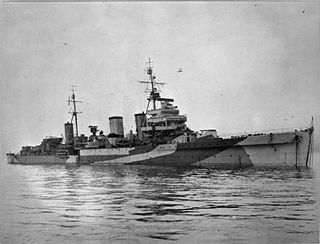
HMS Enterprise was one of two Emerald-class light cruisers built for the Royal Navy. She was built by John Brown & Company, with the keel being laid down on 28 June 1918. She was launched on 23 December 1919, and commissioned on 7 April 1926. She was the 14th ship to serve with the Royal Navy to carry the name Enterprise, a name which is still used in the Royal Navy today.

HMS Revenge was the lead ship of five Revenge-class super-dreadnought battleships built for the Royal Navy during the First World War in the mid-1910s. The ships were developments of the Queen Elizabeth-class battleships, with reductions in size and speed to offset increases in armour protection whilst retaining the same main battery of eight 15-inch (381 mm) guns. She was laid down in 1913, launched in 1915 and commissioned in February 1916, early enough to be worked up to see action with the Grand Fleet at the Battle of Jutland in May that year. During the engagement, she engaged German battlecruisers, damaging two of them before being forced to turn away to avoid torpedoes that damaged her squadron flagship and caused the squadron to lose contact with the rest of the fleet. Revenge emerged from the battle unscathed, but she saw no further action during the war, as the British and German fleets turned to more cautious strategies owing to the risk of submarines and naval mines.

HX convoys were transatlantic convoys in the North Atlantic during the First World War and in the Battle of the Atlantic in the Second World War. HX convoys sailed eastwards from Halifax, Nova Scotia in Canada, to Liverpool and other ports in Britain. They were joined the BHX convoys from Bermuda en route. After the United States entered the war, HX convoys began at New York.
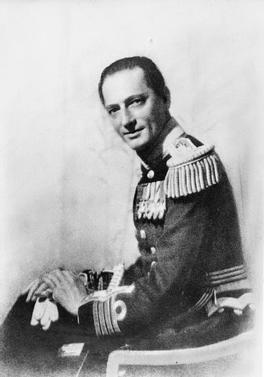
Augustus Willington Shelton Agar, was a Royal Navy officer in both the First and the Second World Wars. He was a recipient of the Victoria Cross, the highest award for gallantry in the face of the enemy that can be awarded to British and Commonwealth forces, for sinking a Soviet cruiser during the Russian Civil War.
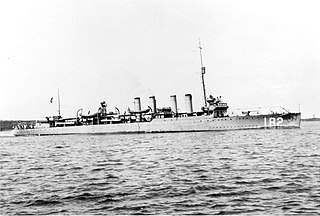
The first USS Thomas (DD–182) was a Wickes-class destroyer of the United States Navy that entered service just after World War I.

The Sun Life Building is a historic 122-metre (400 ft), 24-storey office building at 1155 Metcalfe Street on Dorchester Square in the city's downtown core of Montreal, Quebec, Canada.
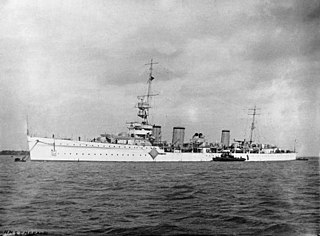
HMS Emerald was an Emerald-class light cruiser of the Royal Navy. She was built by Armstrong at Newcastle-on-Tyne, with the keel being laid down on 23 September 1918. She was launched on 19 May 1920 and commissioned 14 January 1926.

Operation Nordseetour was a raid conducted between 30 November and 27 December 1940 by the German heavy cruiser Admiral Hipper. It was part of the Battle of the Atlantic of World War II, with the ship seeking to attack Allied convoys in the North Atlantic. Admiral Hipper left Germany on 30 November 1940 and entered the Atlantic after evading British patrols. She had difficulty locating any convoys and was plagued by engine problems and bad weather. While returning to Brest in German-occupied France, Admiral Hipper encountered Convoy WS 5A on the night of 24 December. A torpedo attack that night did not inflict any damage and Admiral Hipper was driven off by the convoy's escorts when she attacked on the next morning. Two British transports and a heavy cruiser were damaged. The German cruiser sank a merchant ship later on 25 December, and arrived in Brest on 27 December.

HMS Bonaventure was the lead ship of the Dido-class light cruisers built for the Royal Navy (RN) during the 1930s and during the Second World War. Completed in 1940, Bonaventure was assigned to the Home Fleet and participated in Operation Fish, the evacuation of British wealth from the UK to Canada in July. The ship made one short patrol in August into the North Atlantic to search for German blockade runners and followed that up by escorting an aircraft carrier as it conducted air strikes in Southern Norway in September. The next month she was tasked to provide cover for anti-shipping raids off the Norwegian coast. Bonaventure participated in the unsuccessful search for the German commerce raider Admiral Scheer in November and sustained weather damage that caused her to spend time in a dockyard for repairs. She was part of the escort force for Convoy WS 5A in December and helped to drive off another German commerce raider. While searching for stragglers from the convoy, the cruiser sank a German blockade runner.

Jeanne d'Arc was a training cruiser built for the Marine Nationale during the late 1920s. She was designed both as a school ship and a fully capable warship. She saw service through the Second World War, escaping to Halifax after the fall of France and eventually joining the Free French forces before the end of the war. Post war, the cruiser resumed her duties as a training ship, being retired in 1964.

HMCS Moncton was a Flower-class corvette that served in the Royal Canadian Navy during the Second World War. She served on both coasts of Canada. She is named after Moncton, New Brunswick.

SS Letitia was an ocean liner built in Scotland for service with the Anchor-Donaldson Line. She continued to serve with its successor company Donaldson Atlantic Line. At the start of the Second World War in September 1939, the British Admiralty requisitioned the ship for service and had it converted to serve as an armed merchant cruiser. She was withdrawn from this service in 1941 to become a troop ship.

HMCS Weyburn was a Royal Canadian Navy Flower-class corvette which took part in convoy escort duties during the Second World War. She fought primarily in the Battle of the Atlantic. She was named for Weyburn, Saskatchewan. She was sunk by mine in 1943.

Émile Bertin was a French fast light cruiser named after Louis-Émile Bertin, a 19th-century naval architect. She was designed to operate both as a minelayer and as a destroyer flotilla leader. The design was the basis for later light and heavy French cruisers, particularly the slightly larger La Galissonnière class of cruisers. This was the first French warship to use triple mountings for guns.
Convoy HX 300 was the 300th of the numbered series of World War II HX convoys of merchant ships from Halifax to Liverpool. It started its journey on 17 July 1944 and was the largest convoy of the war, comprising 166 ships.
Talthybius was a 10,224 GRT Cargo liner that was built in 1911 by Scotts Shipbuilding & Engineering Co Ltd, Greenock, Renfrewshire, United Kingdom for a British shipping line. She was sunk at Singapore in an air raid in 1942. Salvaged by the Japanese, she was renamed Taruyasu Maru, serving with the Imperial Japanese Navy until 1945 when she either struck a mine off Sado Island and sank or was sunk in an attack by aircraft of Task Force 38. She was salvaged by the British, passed to the Ministry of War Transport (MoWT) and renamed Empire Evenlode. She served until 1949, when she was scrapped.
Events from the year 1940 in Scotland.
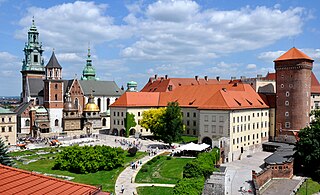
Between 1939 and 1941 objects of fine and decorative art deemed to be of exceptional artistic or historical value, which became known collectively as Polish National Treasures, were evacuated out of Poland at the onset of World War II in September 1939 and transported via Romania, France, and Britain to Canada. The bulk of them came from the Wawel Castle in Kraków and included a rich collection of Jagiellonian tapestries, as well as Szczerbiec, the medieval coronation sword of Polish kings; these came to be known as Wawel Treasures, an appellation sometimes erroneously extended to all of the evacuated items. Most of the rest of the salvaged objects were manuscripts from the National Library in Warsaw, including the earliest documents in the Polish language and Frédéric Chopin's autograph sheet music. The treasures were complemented by works of art from the Royal Castle of Warsaw and a Gutenberg Bible from the library of the Catholic Higher Seminary of Pelplin. After the end of the war, the treasures remained in Canada for nearly two decades due to competing claims made by the new communist government of Poland and the London-based Polish government-in-exile. Negotiations spanned over fifteen years before they were eventually returned to Poland in 1961.
The gold reserve of the United Kingdom is the amount of gold kept by Bank of England as a store of value of part of the United Kingdom's wealth. Leftover from the Gold Standard which the country abandoned in 1931, it is the 17th largest central bank reserve in the world with 310.29 tonnes of gold bars.

HMS Sunflower was a Flower-class corvette of the Royal Navy. She served during the Second World War.



















